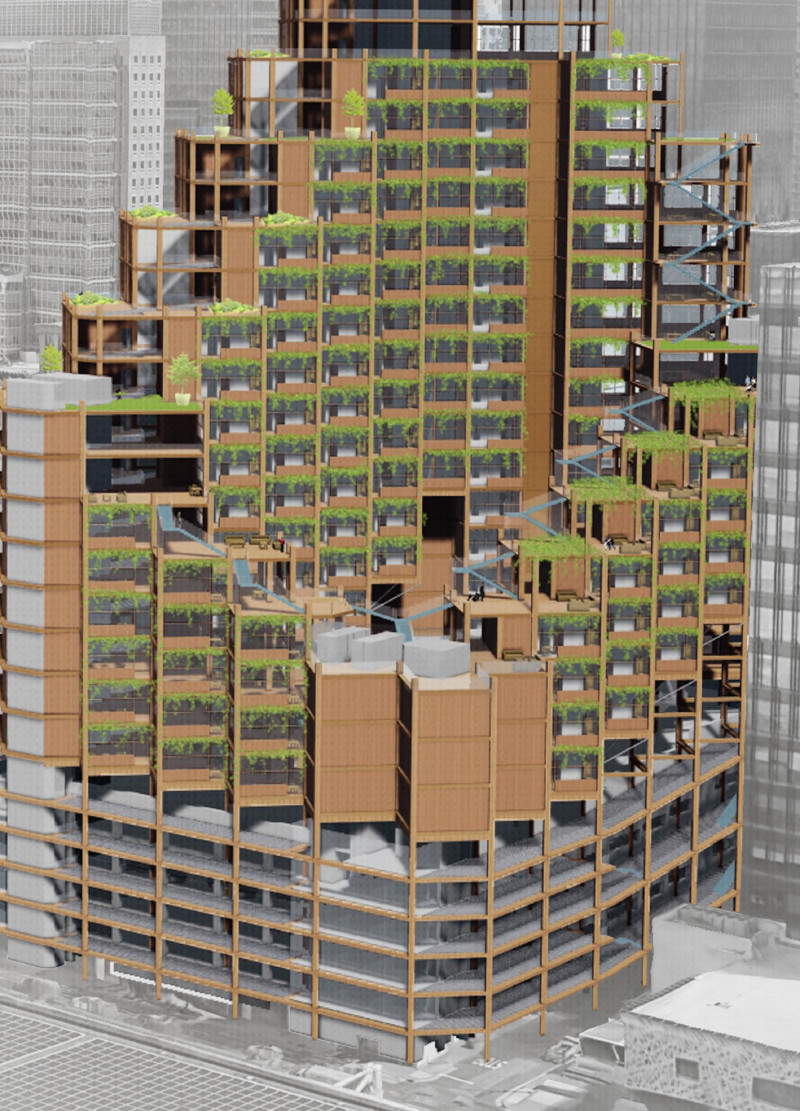5 key facts about this project
The project located in the SoMa District of San Francisco turns an old parking structure into a lively urban space. It combines affordable housing with career education facilities, addressing the needs of the local community. The design aims to create an inviting environment that promotes social interaction and supports sustainable practices within the urban context.
Housing and Community Integration
A range of unit types is provided, including one-bedroom, two-bedroom, and efficiency studios. This variety ensures that different household sizes are accommodated, helping to alleviate the city's housing shortage. The layout features shared public areas designed for interactions among residents, fostering a sense of togetherness and encouraging community engagement.
Sustainable Design Strategies
An important aspect of the design is the use of a bio-active surface made from permeable recycled steel mesh. This material promotes better air quality by releasing beneficial microbes into the indoor environment. Additionally, the arrangement of housing units is carefully considered to maximize natural light and provide stunning views. This connection to outdoor spaces promotes well-being while improving energy efficiency in the building.
Pedestrian-Centric Circulation
The design prioritizes pedestrian movement, encouraging residents to explore their surroundings on foot. Community initiatives that reward walking enhance engagement and promote healthier lifestyles. In this way, the design minimizes reliance on cars, aligning with modern urban planning that focuses on sustainability and livability.
Public and Communal Spaces
Shared public areas face south, creating inviting gathering spots for residents. These spaces are essential for social interaction, where residents can gather for activities or events. By fostering a sense of connection and collaboration, this design encourages a supportive community dynamic.
The careful planning of shared living spaces, combined with the thoughtful use of materials, results in a comfortable urban habitat that enhances daily life for those who live there.


















































